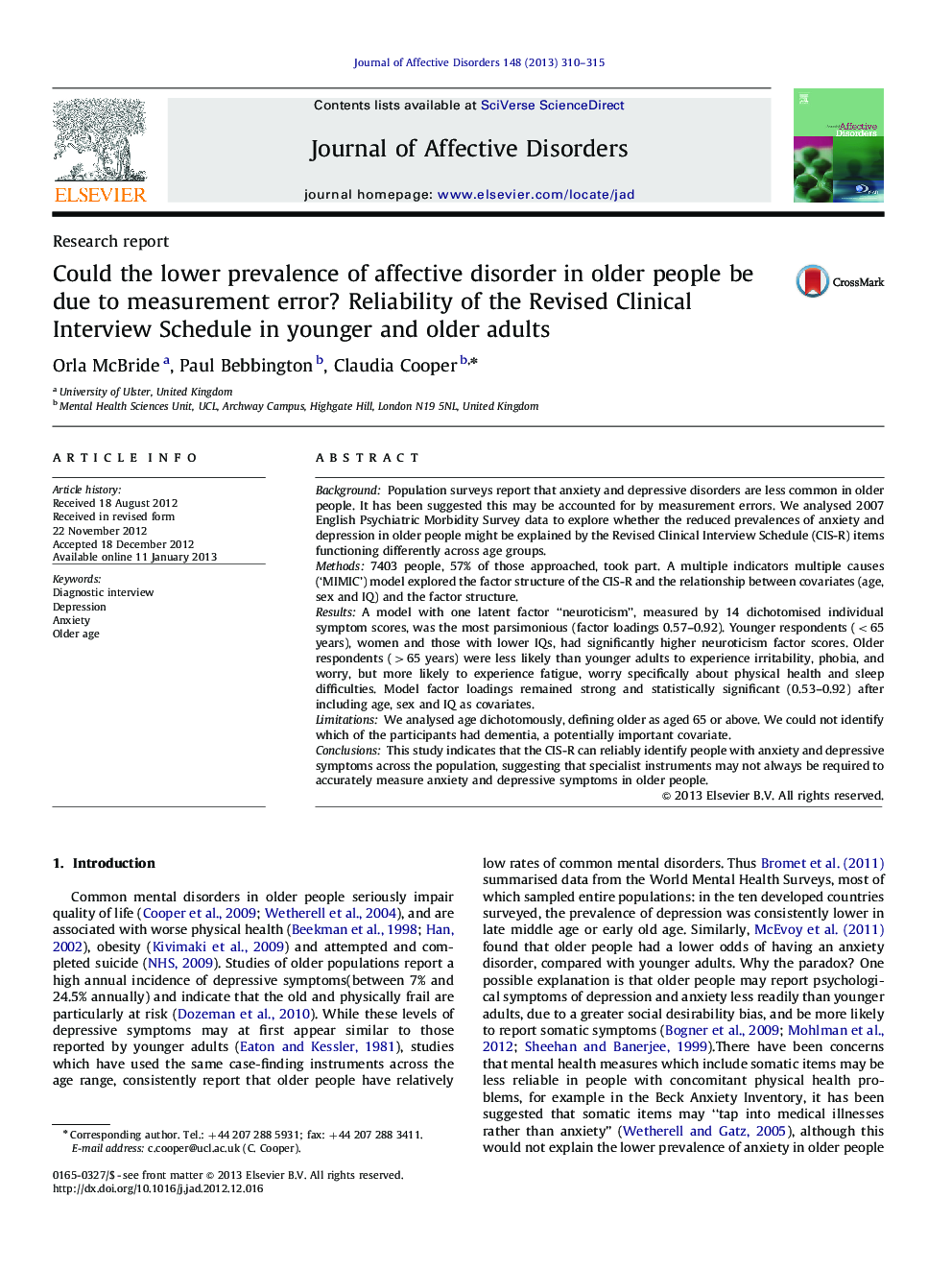| Article ID | Journal | Published Year | Pages | File Type |
|---|---|---|---|---|
| 6234443 | Journal of Affective Disorders | 2013 | 6 Pages |
BackgroundPopulation surveys report that anxiety and depressive disorders are less common in older people. It has been suggested this may be accounted for by measurement errors. We analysed 2007 English Psychiatric Morbidity Survey data to explore whether the reduced prevalences of anxiety and depression in older people might be explained by the Revised Clinical Interview Schedule (CIS-R) items functioning differently across age groups.Methods7403 people, 57% of those approached, took part. A multiple indicators multiple causes ('MIMIC') model explored the factor structure of the CIS-R and the relationship between covariates (age, sex and IQ) and the factor structure.ResultsA model with one latent factor “neuroticism”, measured by 14 dichotomised individual symptom scores, was the most parsimonious (factor loadings 0.57-0.92). Younger respondents (<65 years), women and those with lower IQs, had significantly higher neuroticism factor scores. Older respondents (>65 years) were less likely than younger adults to experience irritability, phobia, and worry, but more likely to experience fatigue, worry specifically about physical health and sleep difficulties. Model factor loadings remained strong and statistically significant (0.53-0.92) after including age, sex and IQ as covariates.LimitationsWe analysed age dichotomously, defining older as aged 65 or above. We could not identify which of the participants had dementia, a potentially important covariate.ConclusionsThis study indicates that the CIS-R can reliably identify people with anxiety and depressive symptoms across the population, suggesting that specialist instruments may not always be required to accurately measure anxiety and depressive symptoms in older people.
